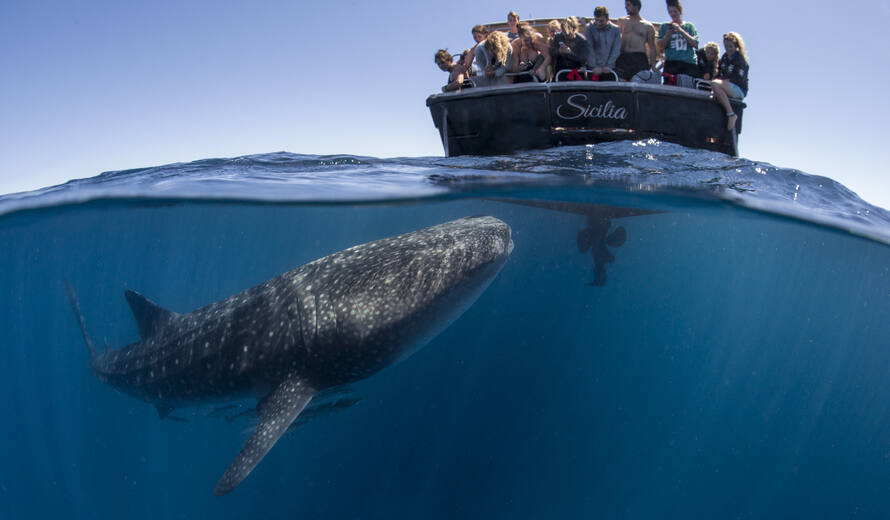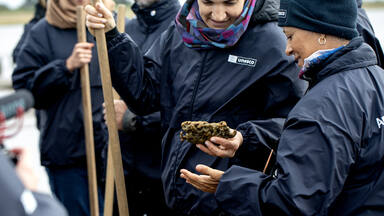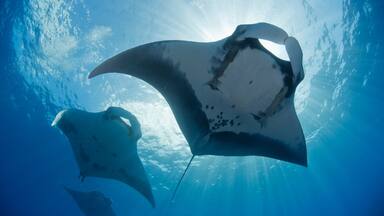Sustainable Tourism in UNESCO World Heritage Marine Sites
On 5 December 2024, managers from the 51 UNESCO World Heritage marine sites convened online with experts from UNESCO and the International Union for the Conservation of Nature (IUCN) to share best practices in managing tourism sustainably across the globe.
Tourism and UNESCO World Heritage marine sites are deeply interconnected, as these flagship marine protected areas (MPAs) often become major tourist destinations, drawing visitors from around the world. While tourism can foster economic growth and offer social benefits to local communities, it also presents risks. Uncontrolled development and excessive visitor numbers can threaten the integrity of these sites, especially as they face the growing challenges of climate change and global biodiversity loss.
The goal of the online meeting was to equip UNESCO World Heritage marine site managers with best practice knowledge and tools for managing tourism sustainably. This would enable local management teams to implement effective measures to monitor and protect their sites from the negative impacts of over-tourism.
Managers from UNESCO World Heritage marine sites shared their firsthand experiences and strategies for sustainable tourism. The Great Barrier Reef World Heritage site (Australia) outlined its sustainability framework built on three core pillars: Protection, Presentation, and Partnership. This approach involves proactive environmental conservation, educating tourists and operators about reef preservation, interpreting data to guide decisions, and continuously adjusting strategies based on ongoing monitoring. In Palau, the Rock Islands Southern Lagoon World Heritage site highlighted the significance of community-driven initiatives, strong enforcement of visitor regulations, and cultural connections in protecting the area. Their approach demonstrates how simple actions, like the Palau Pledge—where all visitors to the country commit to respecting the environment and culture—can make a powerful difference in preserving the natural landscape. Meanwhile, at the Banc d’Arguin National Park World Heritage site in Mauritania, the local management team is developing a sustainable tourism plan that supports alternative livelihoods for the community, with a special focus on empowering local women.
In compliment, global experts showcased current best practices for managing and promoting sustainable tourism sourced from protected areas across the world. Mr. Peter Debrine from UNESCO’s World Heritage and Sustainable Tourism Programme highlighted the crucial role of visitor management in preserving the Outstanding Universal Value (OUV) of UNESCO World Heritage sites. He stressed the importance of collecting, analyzing, and acting on visitor data to guide decision-making, as well as the need to engage local communities for long-term success and sustainability. Mr. Arnau Teixidor from the IUCN Centre for Mediterranean Cooperation presented effective tools and training programs currently being used in 13 MPAs across the Mediterranean, as part of the IUCN MEET Network. These initiatives focus on developing ecotourism, measuring impacts, and building partnerships. Mr. Kristijan Švajnzger from the travel organisation Intrepid Travel then provided real-world examples of sustainable tourism, illustrating the practical application of these strategies.
The UNESCO World Heritage List comprises 51 marine sites across 37 countries. Due to their status as the world’s flagship marine protected areas, UNESCO World Heritage marine sites are uniquely positioned to drive change and innovation, help set global standards in conservation excellence, and serve as beacons of hope in a changing ocean.
This online meeting is made possible with the support of the French Biodiversity Agency, the Great Barrier Reef Foundation.



